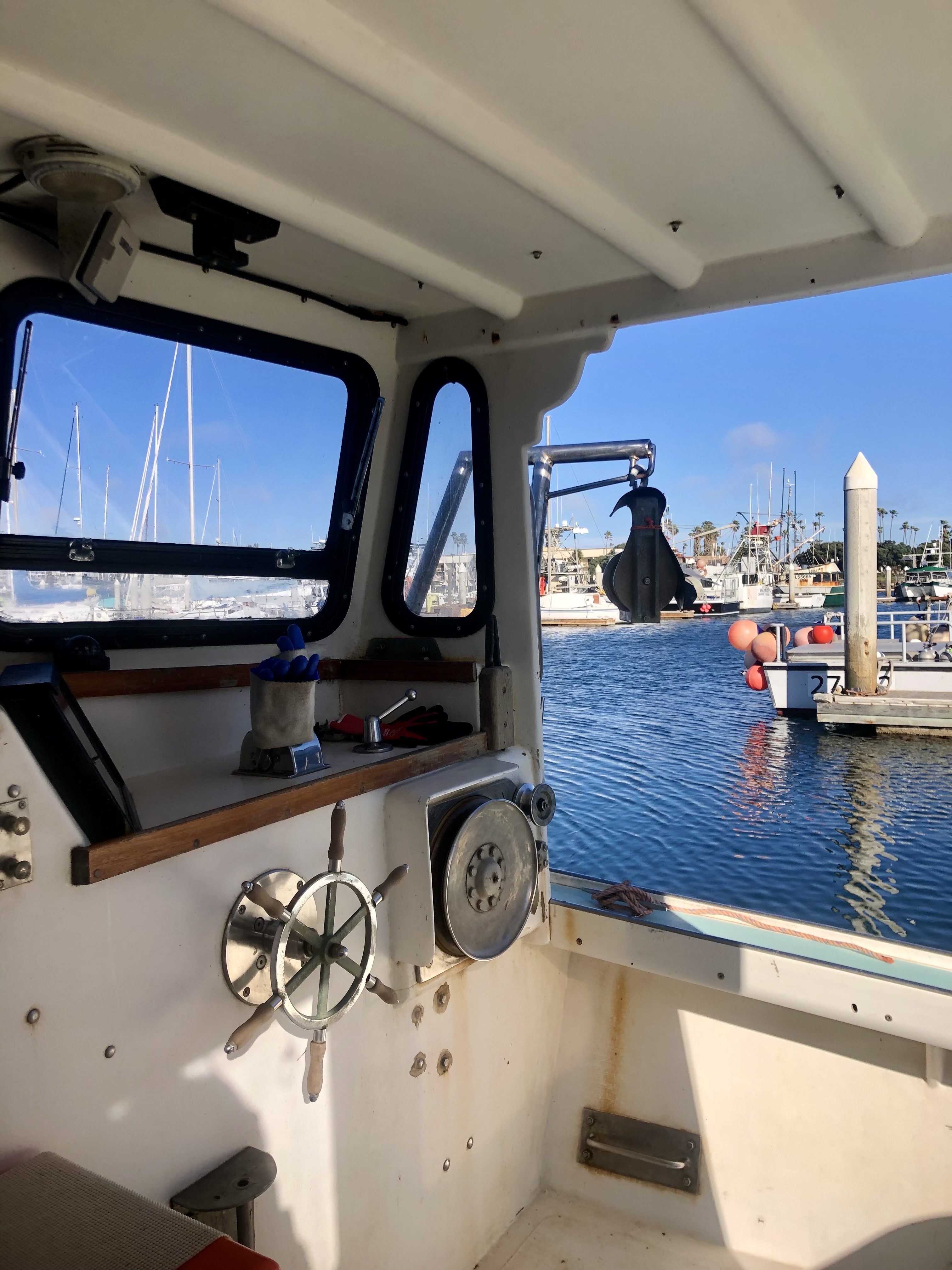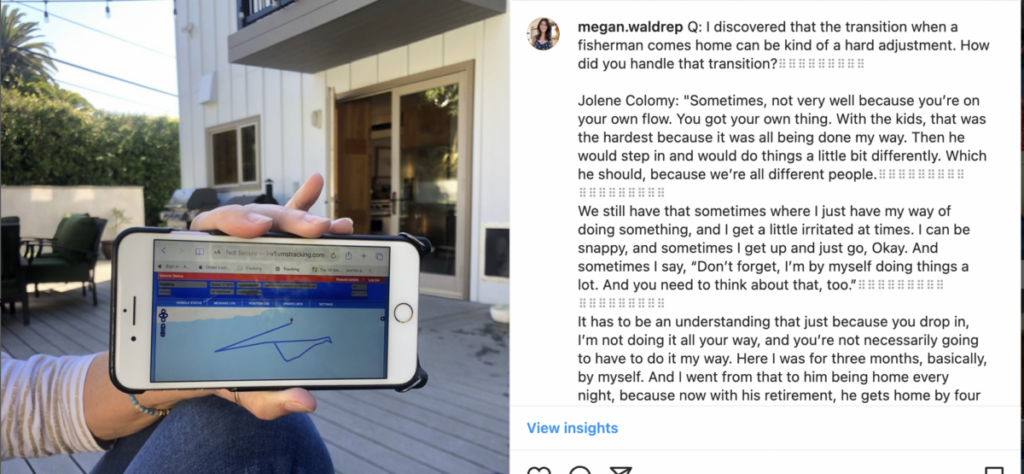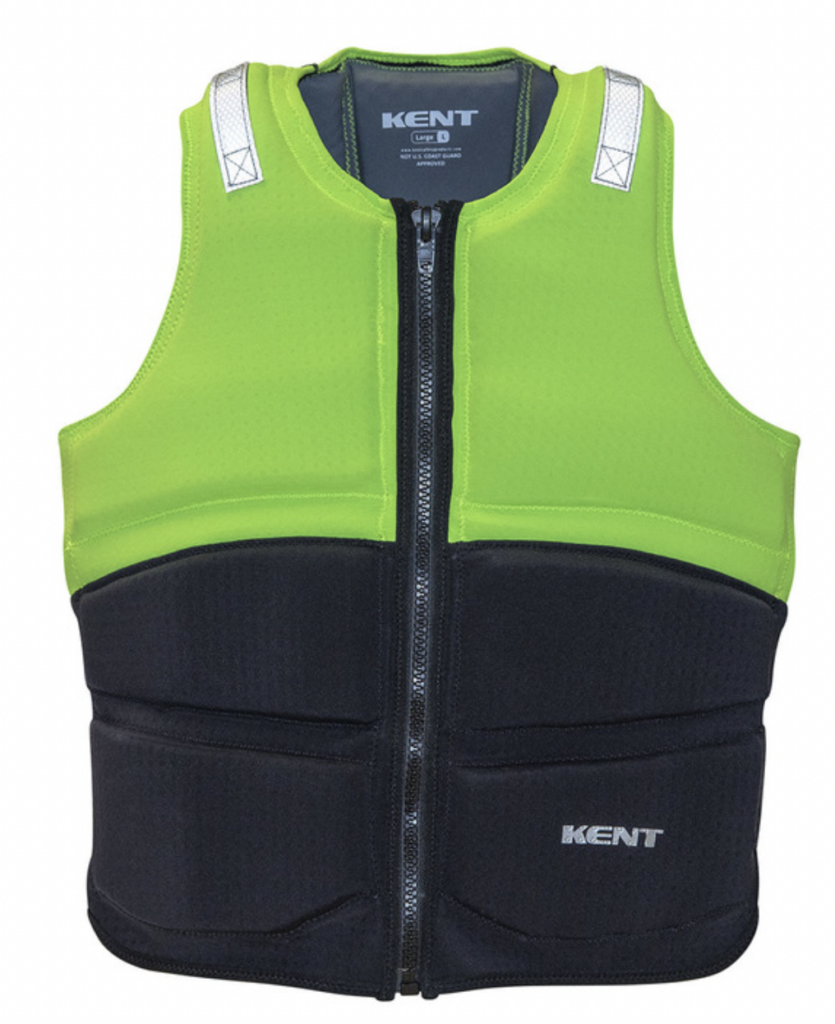My fisherman left at five this morning without a Garmin InReach because we couldn’t find it. Recent engine trouble makes me nervous, but what can I do? It’s the nature of the beast, boat stuff happens, and my husband, Chris Dabney, needs to pull traps “today.”
Commercial fishing is not the enemy, but rather anxiety, and over the years, Partners of Commercial Fishermen (POCFs) have learned to tame the worry. However, it is reassuring to have more than good vibes and a satellite phone to protect your fisherman, especially with stories like this from Jim Colomy, a forty-year spiny lobster commercial fisherman out of Santa Barbara, California:
“I’ve fished alone for years now. After a close call years ago when my seat broke, and I almost went over while my boat was doing 16 knots on autopilot, I bought a kill switch from Emerald Marine.”
*Gulp*
His wife, Jolene, offers excellent tips on raising a family with a fisherman here, and his daughter, Lauren, confirmed dad’s advice with an Instagram DM. (Hey, Lauren!)
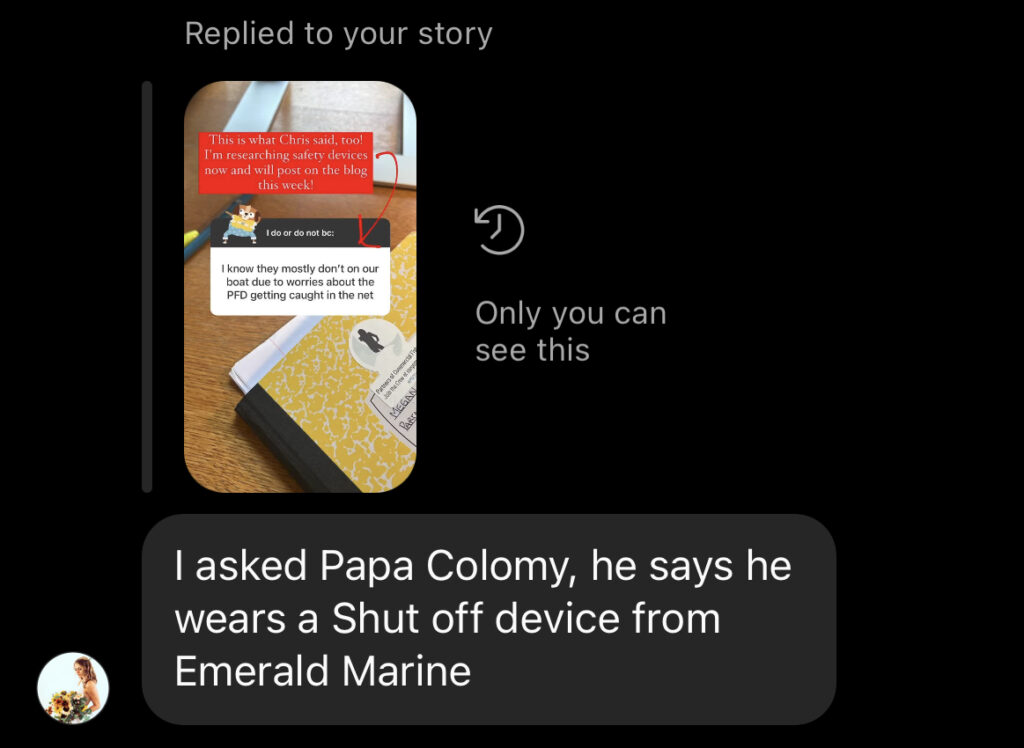
Here’s a quick reference for marine safety devices to make this easier because it’s confusing AF:
MMSI: “Marine Mobility Service Identity Number.”
I relate an MMSI to a boat’s social security number plugged into the vessel’s VHF radio system to broadcast the boat’s position for travel and emergencies. I believe you need an MMSI number to connect with a few devices linked below.
VHF Radio: “Very High Frequency” Radio.
Or the walkie-talkie-looking thing that truck drivers also use. Channel 16 is the primary channel to contact the Coast Guard and communicate with other vessels. Vessels connect on channel 16, then move up or down to connect on a less public channel to share information (or shoot the sh*t).
MOB: “Man Overboard.”
When someone falls off the boat and into a body of water.
PFD: “Personal Flotation Device.”
PFDs are usually designed as vests with manual or automatic deployment.
PLB: “Personal Locator Beacon.”
A basic tool using satellite signals to locate a person anywhere in the world, both land and sea. Transmits signals for up to twenty-four hours. Generally not waterproof unless specified on the device.
EPIRB: “Emergency Position Indicating Radio Beacon.”
Basically, a PLB on steroids. It’s made for water, will transmit for up to 48 hours, and floats.
SARSAT: “Search And Rescue Satellite-Aided Tracking”
It uses GPS and NOAA satellites, which hover lower in lower orbits, and “aims to reduce the time required to contact emergency services.” NASA explains SARSAT here.
Kill Switch:
A “kill switch” is a device that cuts off the engine if the captain or crew (depending on the device) is MOB. A kill switch can come in the form of a lanyard or connects to the device via Bluetooth.
Satellite Messengers:
Satellite Messaging devices act as personal locator beacons with the added feature of messaging loved ones, similar to text. Two-way satellite communicators allow loved ones to text back, but a basic one-way will do if you want your fisherman to check in from time to time. Here is a popular Garmin InReach used in our partners of commercial fisherman community and a more basic model here.
Floaties for Fishermen?
I was also thrown that Chris doesn’t wear a PFD or EPIRB “because it gets in the way.” I mean, I get it, but where does the boundary lie? I mentioned this to our partners of commercial fisherman community on Instagram Stories, and fellow POCF Tyler Rose-Counts summed it up perfectly:
“I’m always curious about whether the perceived risk of entanglement is, in reality, greater than the risk of falling over without a PFD.”
Exactly.
Partner of a Commercial Fisherman, Bri Dwyer, says Pacific Northwest crabbers generally do not wear them. Still, some Alaska fishermen wear low-profile inflatable vests like this one by Kent Safety.
I pressed Chris further about his emergency plan, which he described as DFO or “Don’t Fall Overboard.” He explains that once you’re overboard, you’re kinda screwed because your boots fill with water, causing you to sink. Great.
I ask what he’ll do in a MOB situation.
“I’ll climb back on the boat.”
What if the boat speeds away?
“I’ll swim to shore.”
How will you swim if your boots are filled with water?
*Awkward silence.*
Thankfully, our convo inspired Chris to finally register for a Marine Mobility Service Identity Number (MMSI), which he did for free through BoatUS, a vessel assist program. (Non-members pay a twenty-five dollar fee to register an MMSI.)
I should note that BoatUS does not respond to emergencies but only assists with water towing, road towing for trailer boats, refueling, and free MMSI numbers and discounts for members. The term “vessel assist” has limits here.
I dug through various marine safety devices that may work for both captains and deckhands. I hope you find them helpful, and I wish you successful and safe fishing seasons to come!
6 Kill Switch and Man-Over-Board Safety Devices For Commercial Fishermen
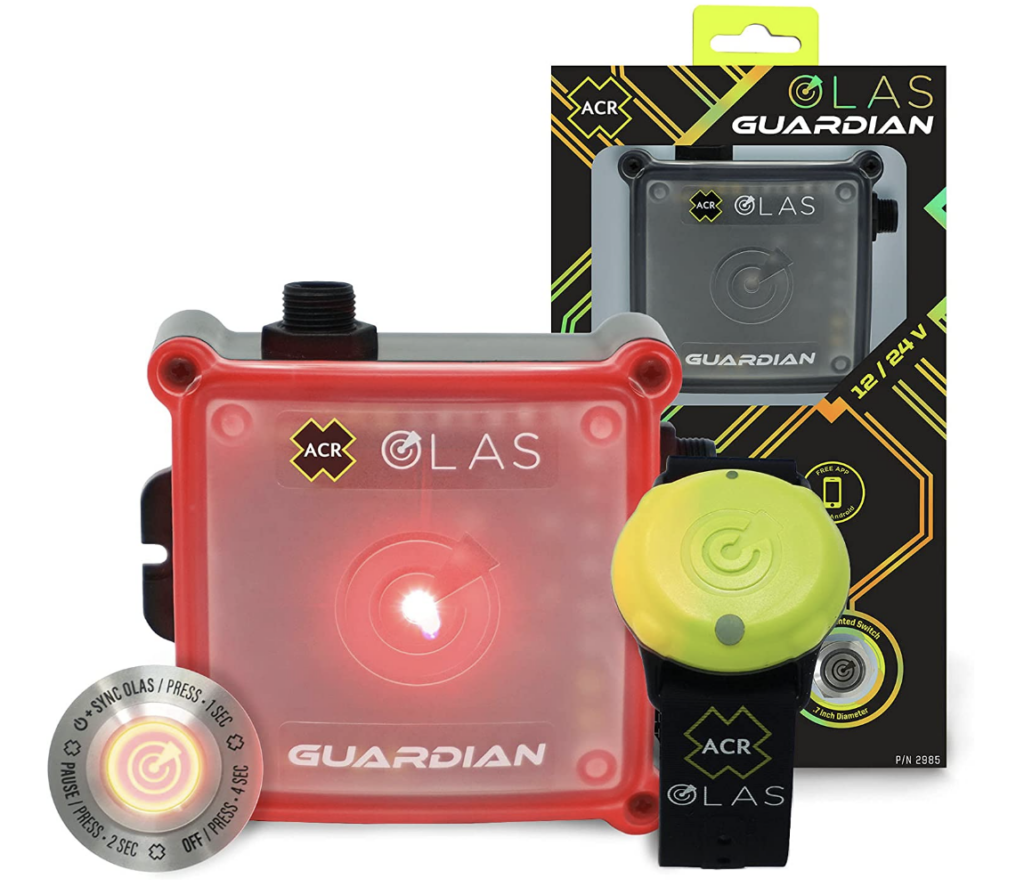
OLAS Guardian Engine Shutoff Marine Safety Device (Inboard & Outboard Engines)
The OLAS Guardian is a wireless engine shutoff “kill” switch that works for both inboard and outboard engines on vessels up to 50 feet (or up to 80 feet with the extender, though they’re shaking out the bugs.) An emergency engine shutoff button can be installed, so anyone onboard can assist with MOB ASAP.
The alarm and visuals sound “in two seconds of a Man Overboard (MOB) situation,” and the kill switch works without a cell phone if needed. Otherwise, it links to the app via iOS (Apple) and Android through Bluetooth. (You don’t need Wifi or a cell signal to work Bluetooth.) Made in the USA.
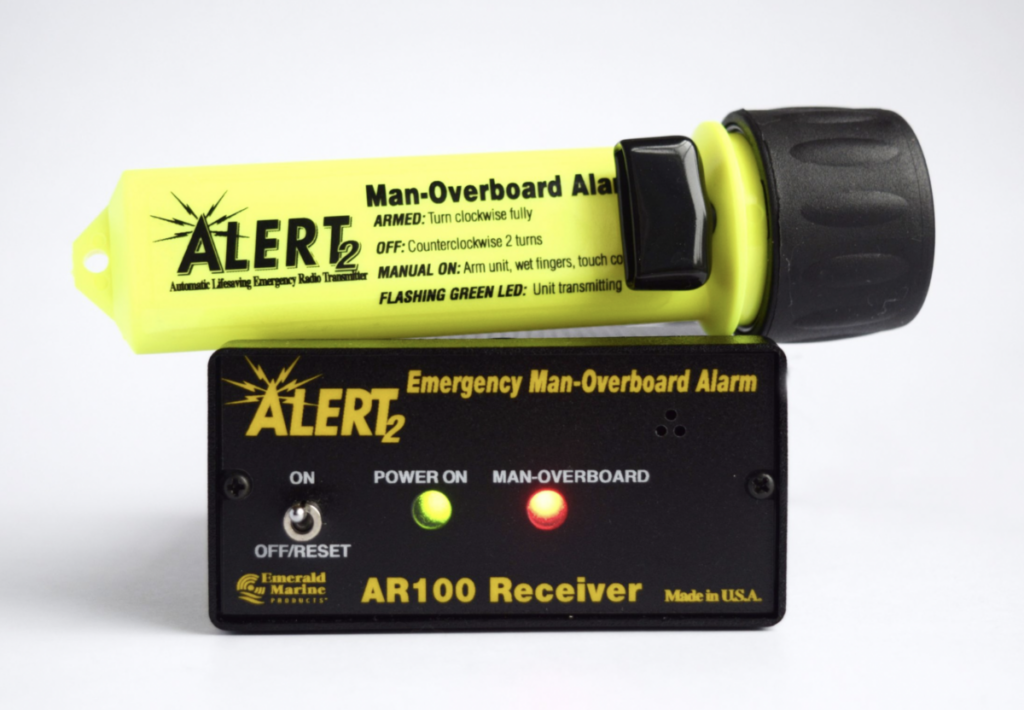
ALERT2 Man-Overboard Receiver by Emerald Marine
This is what Fisherman Colomy uses. Like the OLAS, the wearable Alert transmitter sends a signal to the Alert2 receiver as soon as MOB hits the water to kill the engine. An internal alarm and a red “Man Overboard Light” is emitted. It can also be set up to mark the chart plotter to keep track of MOB positioning.
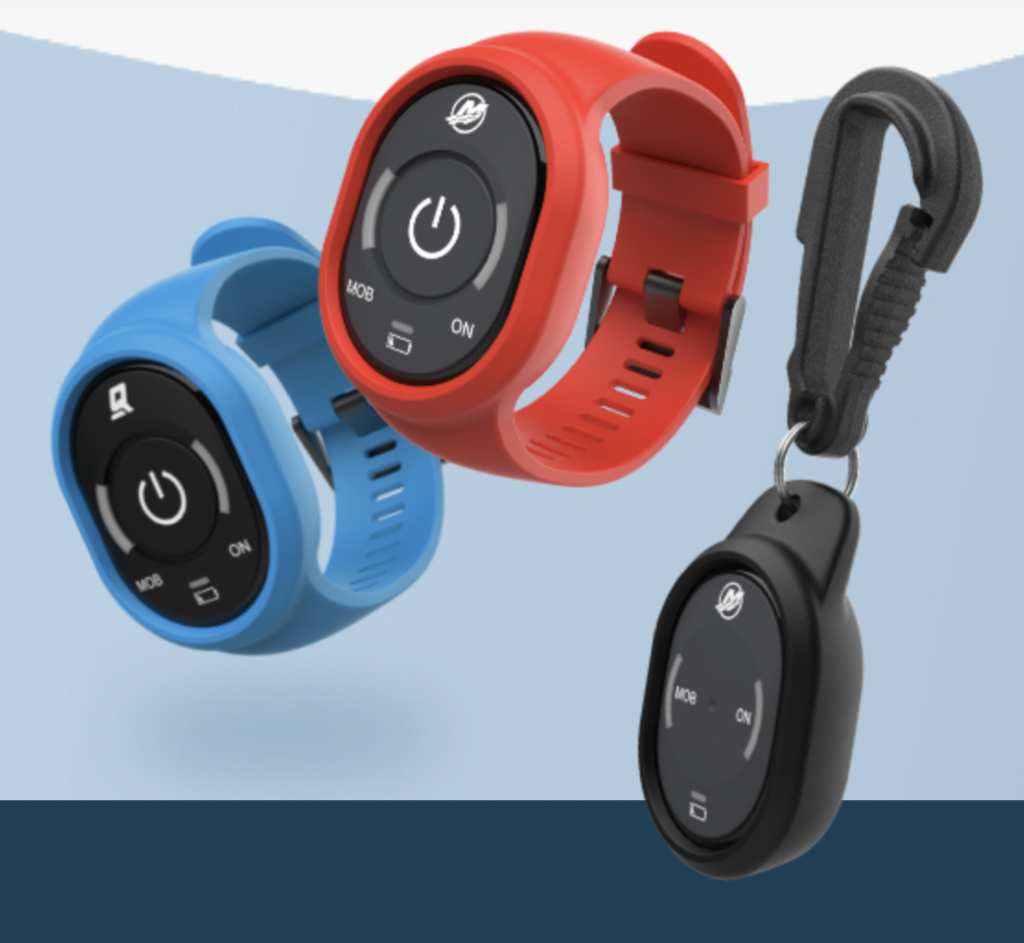
1st Mate Marine Safety “Engine Kill Switch” Marine Saftey Device
I believe this only works with outboard engines and also works through Bluetooth. The small, wearable fobs work for the captain (or onboard pet), and wristband fobs for the crew sound alarms and give GPS locations for MOB. It operates through a downloadable app for Android and iOS.
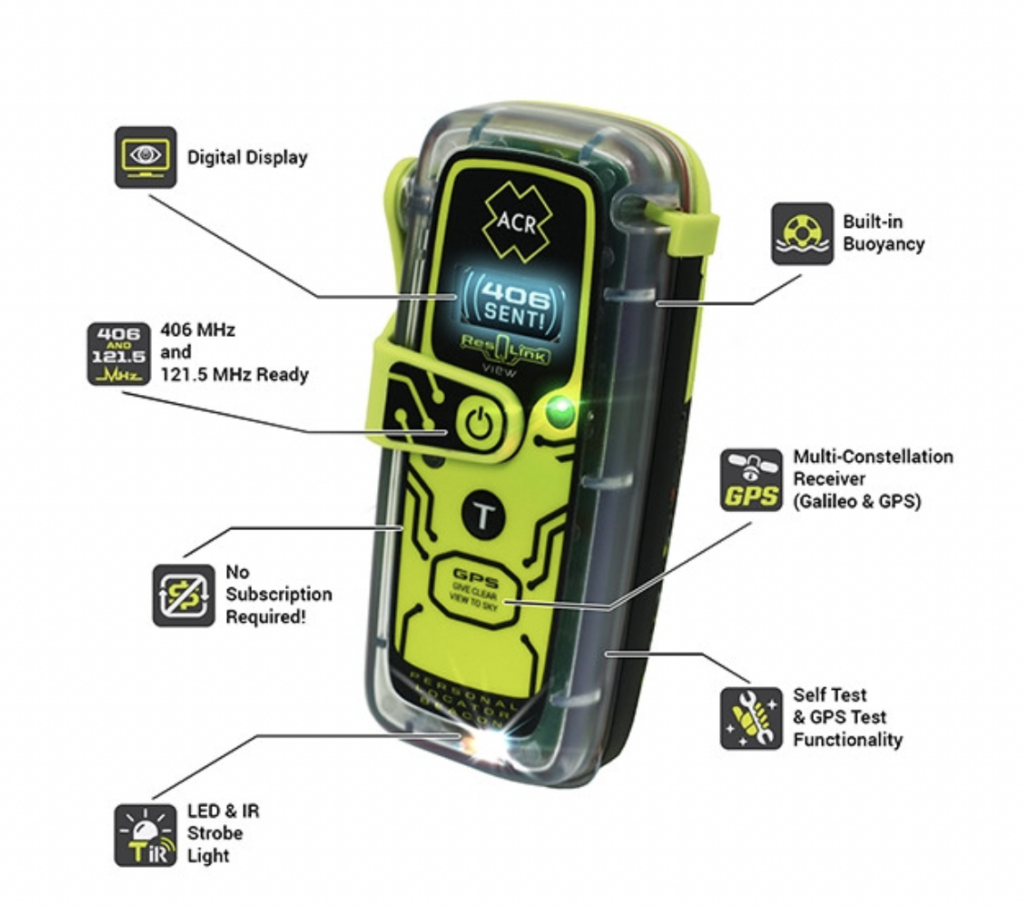
ACR RESQLink VIEW 425 PLB ACR RESQLink VIEW 425 PLB
ACR RESQLink VIEW 425 PLB is a personal beacon you attach to a PFD. Chris recently bought one when his deckhand quit. (Mainly because I forced him, and it was the only model available at the West Marine near his home port.) It has a digital display and features listed in the image above, and no subscription is required. I’d imagine having a digital display confirming your signal to a worldwide range of rescue satellites would be hopeful in this situation. The RESQLink can be used as a PLD on land or sea, which is perfect for the adventurous fishing couple who loves a road trip or backpacking in the wilderness. Wristband fobs for the crew are sold separately.
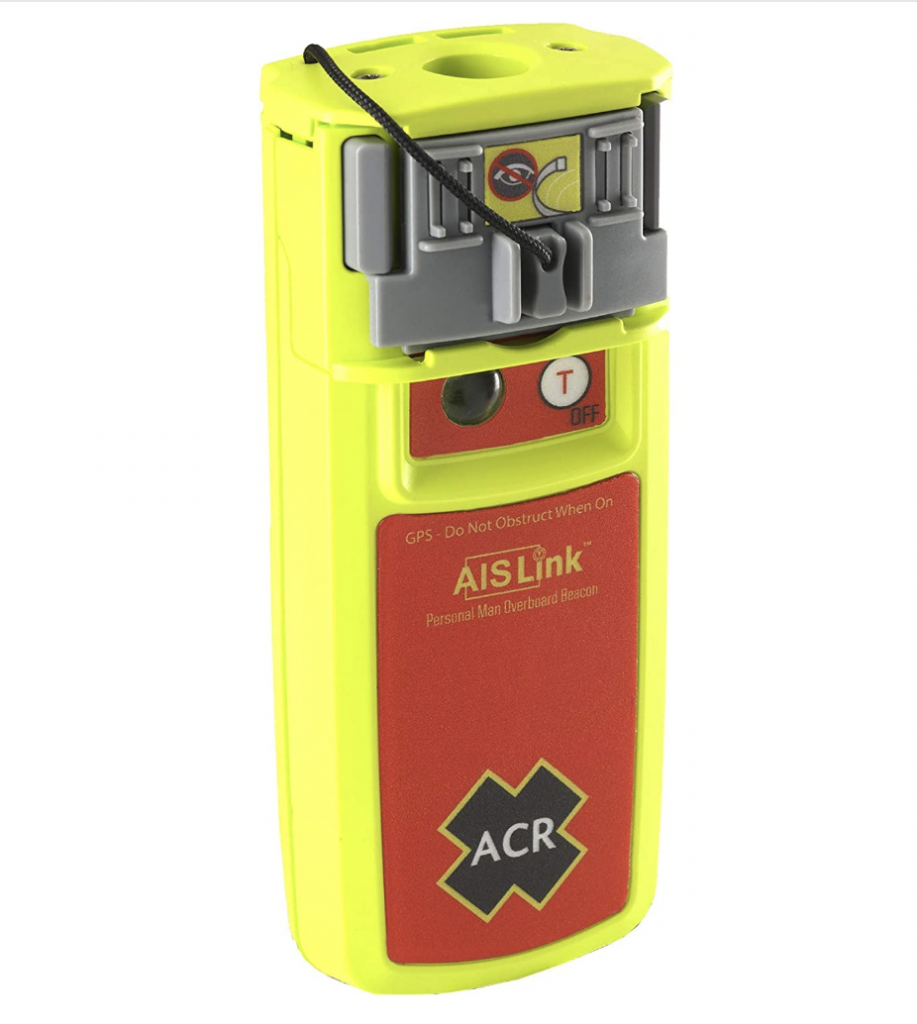
ACR 2886 AISLink MOB Personal AIS Overboard Beacon ACR 2886 AISLink MOB Personal AIS Overboard Beacon
ACR 2886 AISLink MOB Personal AIS Overboard Beacon attaches to a lifejacket and activates fifteen seconds upon inflation or within fifteen seconds. Instead of linking to rescue satellite signals, it sends an alert to vessels with AIS receivers or AIS-compatible chart plotters up to five miles away (conditions depending) with precise GPS location. It can also alert the crew via a DSC alarm on the vessel’s VHF radio. The Strobe light assists with location as well.

Ocean Signal rescueME MOB1 Personal Marine Saftey Device
Ocean Signal rescueME MOB1 is said to be the “world’s smallest AIS with integrated DSC” (or digital selective calling). It attaches to a PFD, then connects a digital signal to alert VHF radios “to sound the DSC alarm and can alert neighboring vessels within a five-mile range,” sending the first alert within fifteen seconds through manual or auto-deployment. Touts a seven-year battery life and a five-year warranty.
Do you own any devices listed above, or did we miss a good one? Please share in the comments below!
If you liked this, you’d love Gift Guide for Commercial Fishing Couples and Families.
*First published on meganwaldrep.com





